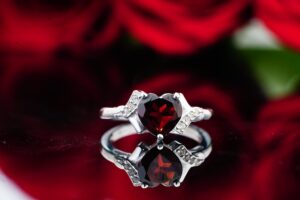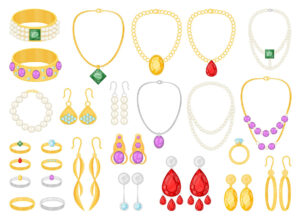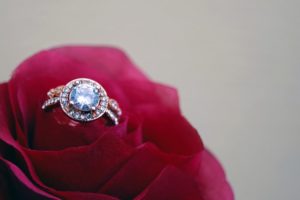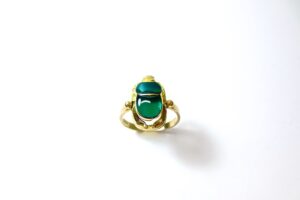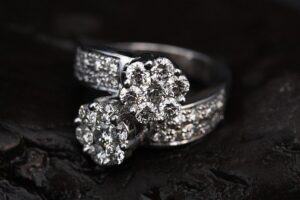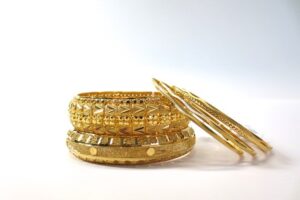How Ancient Jewellery Has Transformed To The Modern Piece

Like all trends, the styles of jewellery change every so often. Some of these styles stay around and others return at a later date. Many jewellery designs originated from earlier years and have made a comeback with vintage jewellery shoppers. Moreover, those ancient jewellery trends that we once wore in the Ancient Egyptian and Roman eras have returned for modern jewellery pieces.
Ancient jewellery can tell you a lot about the previous era such as the economic climate of that time. In this article, we will look at the different periods of ancient jewellery and how it has impacted modern pieces of jewellery in the 21st century.
Ancient Roman Jewellery
Ancient roman jewellery is the first era that we will look at. During this time, there was a massive difference in people’s classes. Furthermore, the only people who wore jewellery during this era were those from the upper and middle classes. Although jewellery was found during excavations, jewellery was discussed in inscriptions as well as presented in statues and mosaics.
Ancient Romans wore these gemstones to showcase their wealth. The common gems worn during this era included opals, emeralds, diamonds, topaz and pearls. The common types of jewellery that ancient Romans wore included necklaces, anklets, rings and crowns (often known as diadems). During this age, pearls were considered one of the most valuable gems.
Furthermore, women didn’t have many rights during this period. Additionally, women wore jewellery to show their husband’s wealth.
Key Roman Pieces
There were different styles of Roman jewellery. For example, a Roman necklace was crafted out of beads or chains, a particular style common in the 21st century. Furthermore, these pieces would often contain a pendant or a charm which is believed to help protect them from evil. In other words, seen as a good luck charm.
Another piece of jewellery Romans would often wear were torcs. It is something that both males and females would wear. If you are unsure what a torc is, think of it as a large ring that is worn around the neck. A torc was made out of a single piece of metal or multiple metals linked together. These metals would often be expensive and those that wore torcs were to show their high status.
It wasn’t just torcs that the ancient Romans wore either. Earrings were the piece for both males and females during this age, with a semi-precious stone embellished into the jewellery.
Other pieces of Roman jewellery include rings which were worn by adults and children. Again, it is believed that these pieces of ancient jewellery were worn to protect them from bad luck.
Ancient Greek Jewellery
Another time when jewellery thrived was during the ancient Greek period. Earrings, necklaces, bracelets, armbands, diadems (crowns) and many more were worn during this period. Before the period of crafting metals for jewellery, ancient Greeks would make jewellery out of bone, clay and stone however, the most unique was gold jewellery.
Greek jewellery was very different to Egyptian jewellery. Greek jewellery would often include motifs with bulls, rams and gods. Additionally, butterflies were often included with ancient greek jewellery as they represented the soul for burial jewellery.
Ancient Greek Cameos
The method of carving these gemstones was different to how you would usually carve. The reason for this is that the image was raised instead of engraved into a piece of metal or stone. These were fantastic as they made the image much cleaner, making it easier for you to tell what the image is. These greek cameos were something that people have worn during many ages and in particular, the victorian times.
Ancient Egyptian Jewellery
Ancient jewellery peaked during the Egyptian age. Furthermore, when we think of ancient Egypt, we immediately think of the period of pyramids, mummies and hieroglyphics. As many burial tombs have been discovered, we have found some of the finest pieces of jewellery that were designed during this era.
Gold was the most common material during this era as it was to show off wealth. However, they were other materials during this period that you might not even know existed. Lapis lazuli, emerald, carnelian, turquoise, and obsidian were all common materials worn during ancient Egypt. Furthermore, it is believed that ancient Egyptian jewellery had a massive influence on pieces that we wore during the Art Deco period, referred to as the revival of the Egyptian period.
Common Pieces Worn During Ancient Egypt
During the ancient Egyptian period, men would wear signet rings including a family emblem. These emblems would often include lions, hawks and scorpions as they were symbols of strength. During battles, if a man was defeated, their signet rings were taken from them. Similar to dog tags in World War 1 and 2.
Ancient Egyptians would also wear collar pieces that were similar to the torcs we previously mentioned however, they were slightly different. These collar pieces show the wealth and status of that individual. Moreover, some collars were so heavy that weights were dangled down the wearer’s back to counter the weight.
1950s Art Deco Jewellery
Art Deco was first introduced into the world in the 1920s however, due to the war, this wonderful trend came to a halt. Nonetheless, it was a trend that was loved by many and returned in the 1950s. Those innovative, geometric patterns were not only a style for jewellery but were also common with interior and exterior design, especially in North America.
This unique style of jewellery took over the world. New York started to compete with Paris and Milan for fashion, especially with jewellery. Furthermore, in 1933, Gold made a return to the fashion industry, especially with Art Deco. Not only did gold look better with jewellery but it was also cheaper to wear and during this time, many countries were poor due to the war.
Contemporary Jewellery
Jewellery has changed massively over the years however, there are still intricate designs that look similar to those we have seen in the past. Jewellery that was once made with beads in the roman and greek eras has made a return and is now called fashion jewellery. Yes, there are also new materials that are used with modern jewellery.
There are many variations of jewellery in the 21st century. We have vintage jewellery for those who appreciate older designs and high quality. Then you have people who purchase from fashion brands such as Pandora. Then you have the jewellery brands like Swarovski that appreciate a more modern piece compared to older styles.
Summary
Although the designs of jewellery are different to what they once were, they have influenced many of the pieces that we wear today. For example, vintage emerald rings are heavily inspired by those eras that used emeralds for their jewellery pieces. Ancient Egyptian jewellery heavily influenced the art deco era, hence why it was referred to as the revival of ancient Egypt. Jewellery trends always return, no matter how far it dates back.

